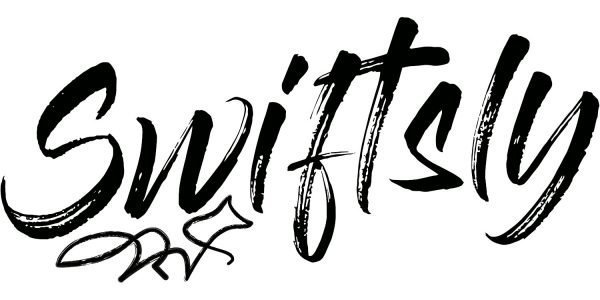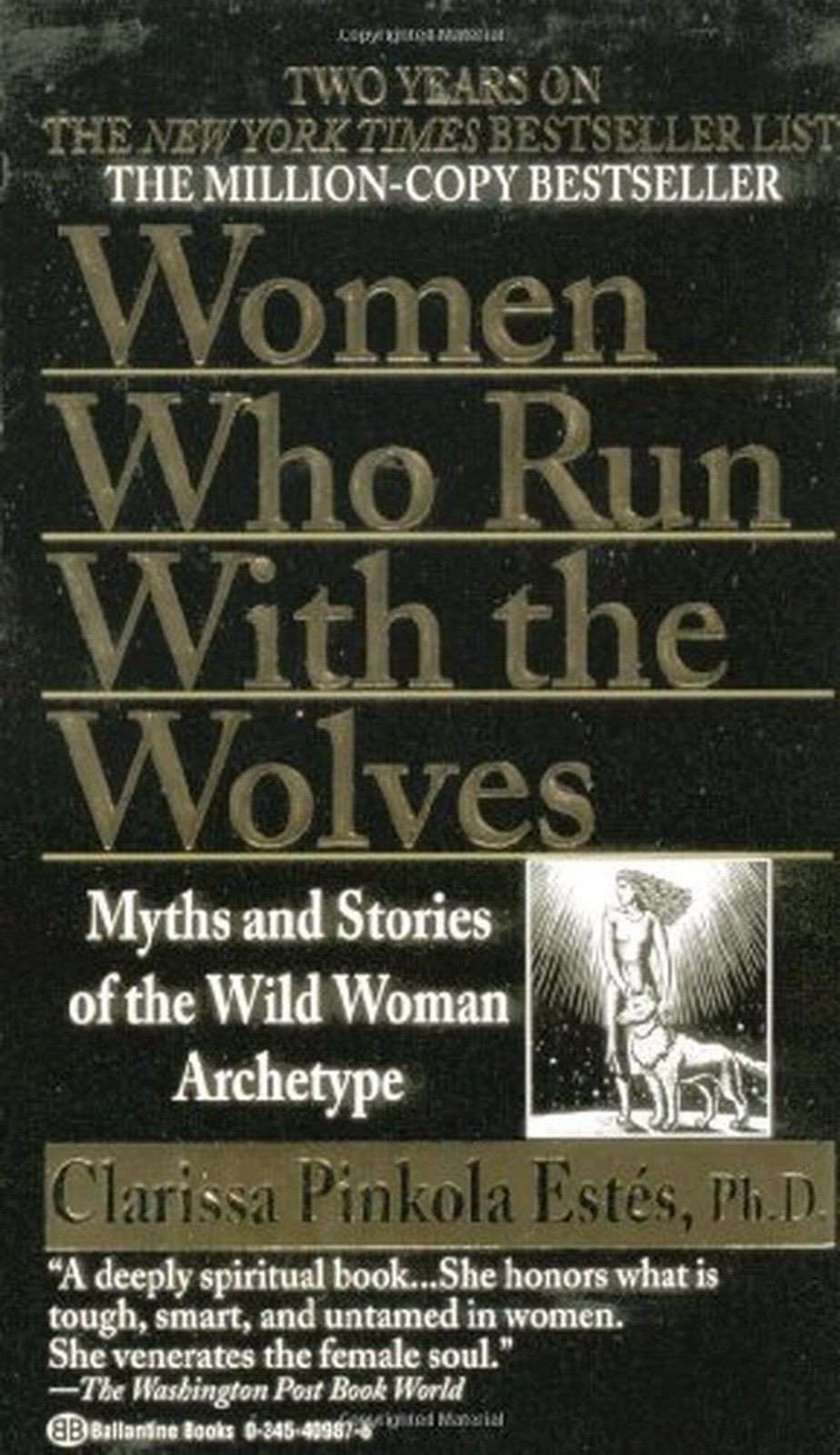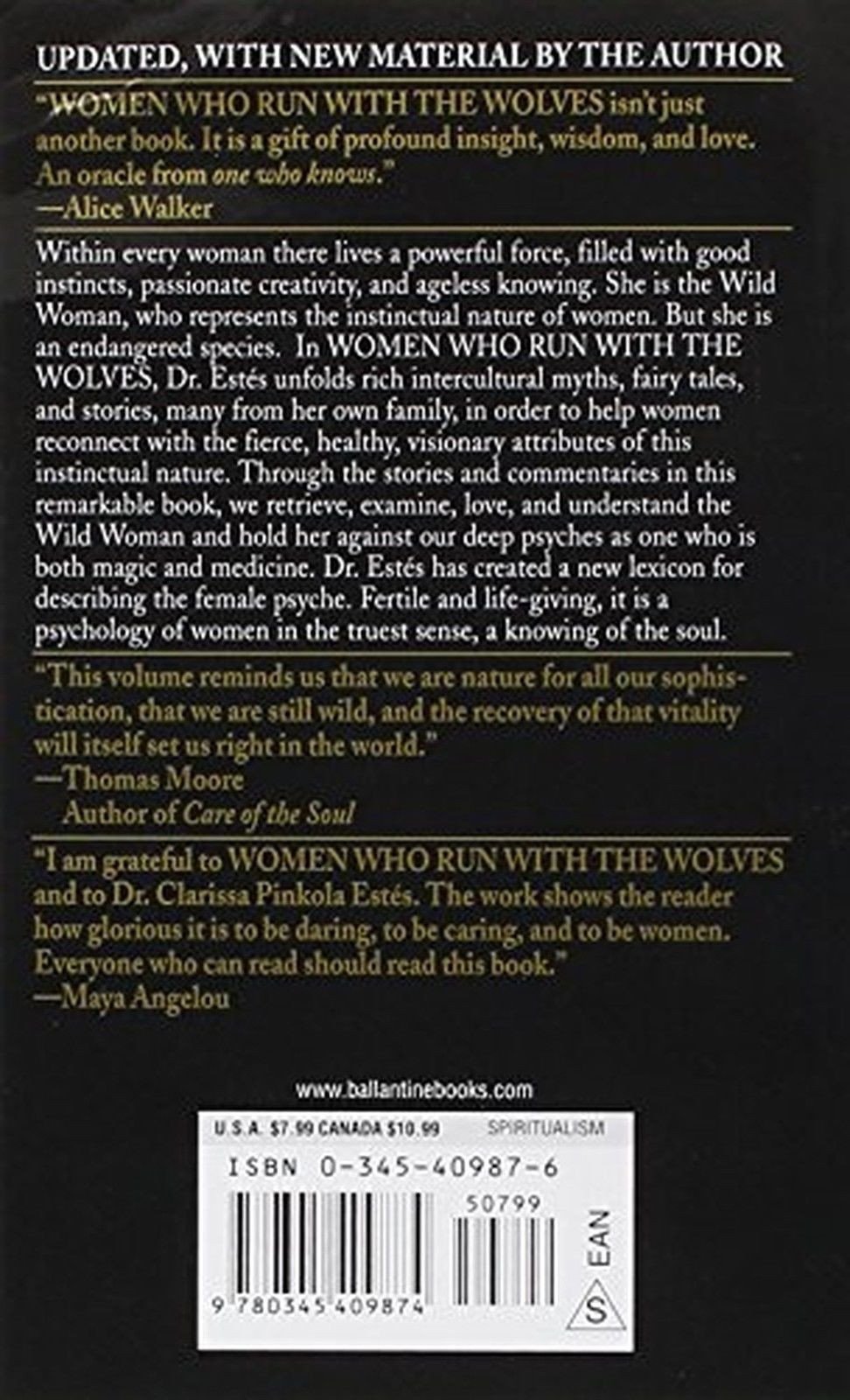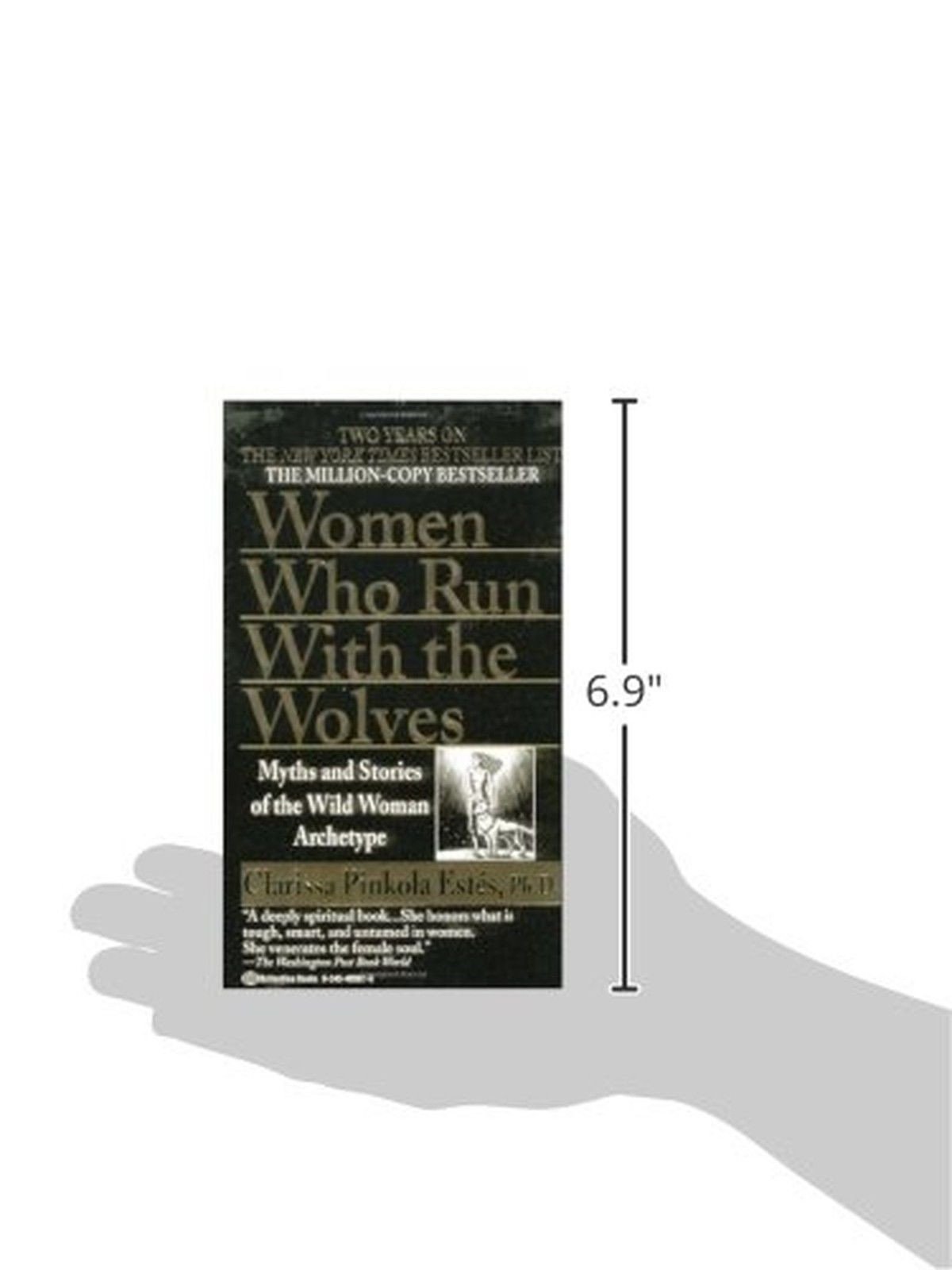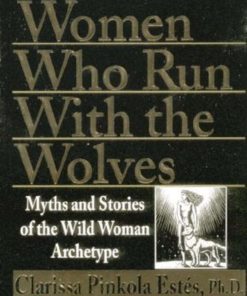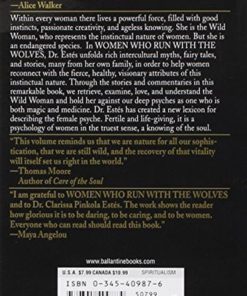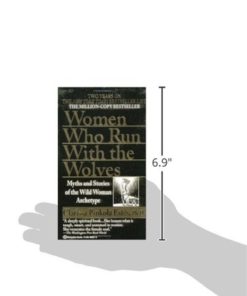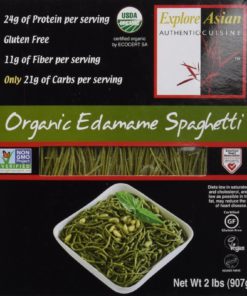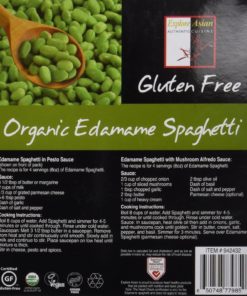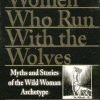-
×
 1 × $160.95
1 × $160.95 -
×
 Cold Steel 97GMSZ Gladius Machete, Black
2 × $34.95
Cold Steel 97GMSZ Gladius Machete, Black
2 × $34.95 -
×
 recteq Ultimate Premium Hardwood Grilling Cooking Pellet Barbecue BBQ Grill Smoker Blend with Red Oak, White Oak, and Hickory, 40 Pound Bag
1 × $47.95
recteq Ultimate Premium Hardwood Grilling Cooking Pellet Barbecue BBQ Grill Smoker Blend with Red Oak, White Oak, and Hickory, 40 Pound Bag
1 × $47.95 -
×
 Diamond Select Toys Marvel Select Venom Action Figure
1 × $51.95
Diamond Select Toys Marvel Select Venom Action Figure
1 × $51.95 -
×
 All Mighty Pacs Laundry Detergent Free Clear Oxi Tub 56 Count
2 × $44.95
All Mighty Pacs Laundry Detergent Free Clear Oxi Tub 56 Count
2 × $44.95 -
×
 The Real Deal Enema Coffee Best Coffee for Enema - 1lb Bag - 100% Organic Green Beans Finely Ground - *Free* Detox Recipe - Gerson Approve
1 × $28.95
The Real Deal Enema Coffee Best Coffee for Enema - 1lb Bag - 100% Organic Green Beans Finely Ground - *Free* Detox Recipe - Gerson Approve
1 × $28.95 -
×
 The Smudging and Blessings Book: Inspirational Rituals to Cleanse and Heal
1 × $14.95
The Smudging and Blessings Book: Inspirational Rituals to Cleanse and Heal
1 × $14.95 -
×
 Novation Impulse 25 Keyboard Bundle with MIDI Cables and Austin Bazaar Polishing Cloth Bundle w/ MIDI Cables
1 × $214.95
Novation Impulse 25 Keyboard Bundle with MIDI Cables and Austin Bazaar Polishing Cloth Bundle w/ MIDI Cables
1 × $214.95 -
×
 Stopmotion Explosion: Complete HD Stop Motion Animation Kit | Stop Motion Animation Software with Full HD 1080P Camera, Animation Software & Book (Windows & OS X)
1 × $69.95
Stopmotion Explosion: Complete HD Stop Motion Animation Kit | Stop Motion Animation Software with Full HD 1080P Camera, Animation Software & Book (Windows & OS X)
1 × $69.95 -
×
 Onlyfire 03340 Electric Push Button Igniter BBQ Replacement for Select Gas Grill Models by Char-broil, Brinkmann, Grillmaster, Aussie,Charmglow, Kenmore, Lowes, Nexgrill, Brinkmann, Bakers, Grillware, Jenn Air, Huntington and Others, Black 4 male outlet
2 × $18.95
Onlyfire 03340 Electric Push Button Igniter BBQ Replacement for Select Gas Grill Models by Char-broil, Brinkmann, Grillmaster, Aussie,Charmglow, Kenmore, Lowes, Nexgrill, Brinkmann, Bakers, Grillware, Jenn Air, Huntington and Others, Black 4 male outlet
2 × $18.95 -
×
 Out of the Abyss (Dungeons & Dragons)
1 × $35.95
Out of the Abyss (Dungeons & Dragons)
1 × $35.95 -
×
 Anker Ergonomic Optical USB Wired Vertical Mouse 1000/1600 DPI, 5 Buttons CE100
2 × $20.95
Anker Ergonomic Optical USB Wired Vertical Mouse 1000/1600 DPI, 5 Buttons CE100
2 × $20.95 -
×
 Backdrop King Inc, Shaggy Jacquard Faux Ostrich/Eye Lash Feathers Sewing Fringe with Metallic Thread Fabric (1 Yard, Black) 1 Yard
1 × $37.95
Backdrop King Inc, Shaggy Jacquard Faux Ostrich/Eye Lash Feathers Sewing Fringe with Metallic Thread Fabric (1 Yard, Black) 1 Yard
1 × $37.95 -
×
 Eleven Madison Park: The Cookbook
1 × $52.95
Eleven Madison Park: The Cookbook
1 × $52.95 -
×
 How to Create Stunning Digital Photography
2 × $24.95
How to Create Stunning Digital Photography
2 × $24.95 -
×
 New Style RTIC 20 Oz Stainless Steel Tumbler 20oz
1 × $29.95
New Style RTIC 20 Oz Stainless Steel Tumbler 20oz
1 × $29.95 -
×
 DJI ND16 Filter for Phantom 3 Professional & Advanced Quadcopter
2 × $18.95
DJI ND16 Filter for Phantom 3 Professional & Advanced Quadcopter
2 × $18.95 -
×
 BBQ funland B5050 (Include Screws) Stainless Steel Heat Plate Brackets, Burner Hanger Brackets Replacement for Chargriller 5050 Duo, Chargriller 3001 (Set of 6)
1 × $18.95
BBQ funland B5050 (Include Screws) Stainless Steel Heat Plate Brackets, Burner Hanger Brackets Replacement for Chargriller 5050 Duo, Chargriller 3001 (Set of 6)
1 × $18.95 -
×
 Coleman High Pressure 5 Foot Hose With Adapter
2 × $45.95
Coleman High Pressure 5 Foot Hose With Adapter
2 × $45.95 -
×
 Ace Martial Arts Supply Single Sword Display Stand
1 × $10.95
Ace Martial Arts Supply Single Sword Display Stand
1 × $10.95 -
×
 Splenda No Calorie Sweetener Value Pack 1200 Individual Packets 1200 Packets
1 × $28.95
Splenda No Calorie Sweetener Value Pack 1200 Individual Packets 1200 Packets
1 × $28.95 -
×
 Attmu 50 PCS Reusable Fastening Cable Ties, Microfiber Cloth 6-Inch Hook and Loop Cord Ties, Black A-50 Black
2 × $13.95
Attmu 50 PCS Reusable Fastening Cable Ties, Microfiber Cloth 6-Inch Hook and Loop Cord Ties, Black A-50 Black
2 × $13.95 -
×
 Hongso SPA231 (4-Pack) Stainless Steel BBQ Gas Grill Heat Plate, Heat Shield, Heat Tent, Burner Cover, Vaporizor Bar, and Flavorizer Bar for Costco Kirland, Jenn-air, Nexgrill, Lowes (17 3/4 4-Pack
3 × $30.95
Hongso SPA231 (4-Pack) Stainless Steel BBQ Gas Grill Heat Plate, Heat Shield, Heat Tent, Burner Cover, Vaporizor Bar, and Flavorizer Bar for Costco Kirland, Jenn-air, Nexgrill, Lowes (17 3/4 4-Pack
3 × $30.95 -
×
 Funko Five Nights at Freddy's Articulated Bonnie Action Figure, 5"
1 × $27.95
Funko Five Nights at Freddy's Articulated Bonnie Action Figure, 5"
1 × $27.95 -
×
 Make Lying Wrong Again Vote for Biden USA President Elections 2020 Democratic Party Political Compaign Coroplast Outdoor Weather-Resistant Non-Reflective with H-stakes Yard Sign 12'x18" Double Side Medium (12"x18")
1 × $29.95
Make Lying Wrong Again Vote for Biden USA President Elections 2020 Democratic Party Political Compaign Coroplast Outdoor Weather-Resistant Non-Reflective with H-stakes Yard Sign 12'x18" Double Side Medium (12"x18")
1 × $29.95 -
×
 Z Hunter ZB-020 Series Fantasy Machete, Cord-Wrapped Handle, 23.75-Inch Overall Green
1 × $24.95
Z Hunter ZB-020 Series Fantasy Machete, Cord-Wrapped Handle, 23.75-Inch Overall Green
1 × $24.95 -
×
 Texas Instruments BA II Plus Financial Calculator small
1 × $35.95
Texas Instruments BA II Plus Financial Calculator small
1 × $35.95 -
×
 Bellemain Stainless Steel Measuring Cup Set, 6 Piece
1 × $24.95
Bellemain Stainless Steel Measuring Cup Set, 6 Piece
1 × $24.95 -
×
 PEPPERLONELY 1oz Kosher Certified Botanical Dried Edible Arnica Flowers
1 × $26.95
PEPPERLONELY 1oz Kosher Certified Botanical Dried Edible Arnica Flowers
1 × $26.95 -
×
 Grow More GL553998 Rapid Root #3, 2 Ounces, 2 oz
1 × $16.95
Grow More GL553998 Rapid Root #3, 2 Ounces, 2 oz
1 × $16.95 -
×
 Whooooo Done It? (Animal Inn)
1 × $17.95
Whooooo Done It? (Animal Inn)
1 × $17.95 -
×
 Star Shower Collection by BulbHead (Star Shower Tree Dazzler)
1 × $64.95
Star Shower Collection by BulbHead (Star Shower Tree Dazzler)
1 × $64.95 -
×
 Vitamin B Complex Supplement Made in the USA | With Vitamin B12, B1, B2, B3, B5, B6, B7 Biotin & B9 Folic Acid | Vegan, non-GMO High Potency Capsules To Boost Energy, Metabolism, Skin, Hair & Eyes
1 × $25.95
Vitamin B Complex Supplement Made in the USA | With Vitamin B12, B1, B2, B3, B5, B6, B7 Biotin & B9 Folic Acid | Vegan, non-GMO High Potency Capsules To Boost Energy, Metabolism, Skin, Hair & Eyes
1 × $25.95 -
×
 FatMat Self-Adhesive Rattletrap Sound Deadener Pack with Install Kit - 25 Sq Ft x 80 mil Thick
1 × $69.95
FatMat Self-Adhesive Rattletrap Sound Deadener Pack with Install Kit - 25 Sq Ft x 80 mil Thick
1 × $69.95 -
×
 DBPOWER (2-in-1) 2Million Pixels 5Meter USB Waterproof HD 6LED Borescope Endoscope Inspection Tube Camera with USB Adpater for Android Device with OTG Function
1 × $23.95
DBPOWER (2-in-1) 2Million Pixels 5Meter USB Waterproof HD 6LED Borescope Endoscope Inspection Tube Camera with USB Adpater for Android Device with OTG Function
1 × $23.95 -
×
 Absolute Eyewear Solutions 5996 Laptop Sleeve Real Tree Pink Camo, 15.6 in.
1 × $12.95
Absolute Eyewear Solutions 5996 Laptop Sleeve Real Tree Pink Camo, 15.6 in.
1 × $12.95 -
×
 Hosa CMP-159 3.5 mm TRS to Dual 1/4" TS Stereo Breakout Cable, 9 Feet 1-Pack
2 × $13.95
Hosa CMP-159 3.5 mm TRS to Dual 1/4" TS Stereo Breakout Cable, 9 Feet 1-Pack
2 × $13.95 -
×
 David Sunflower Seeds 36-Bags Nacho0.8Oz. By David Seeds
3 × $32.95
David Sunflower Seeds 36-Bags Nacho0.8Oz. By David Seeds
3 × $32.95 -
×
 Etrading Medieval Back Hanger Baldric Sword Belt for Zelda Link Princes Anime Sword
1 × $18.95
Etrading Medieval Back Hanger Baldric Sword Belt for Zelda Link Princes Anime Sword
1 × $18.95 -
×
 bayite 4 Pack 1" Low Profile Casters Wheels Soft Rubber Swivel Caster with 360 Degree Top Plate 100 lb Total Capacity for Set of 4 (2 with Brakes & 2 Without) Wheel dia. 1 inch- screws included
1 × $16.95
bayite 4 Pack 1" Low Profile Casters Wheels Soft Rubber Swivel Caster with 360 Degree Top Plate 100 lb Total Capacity for Set of 4 (2 with Brakes & 2 Without) Wheel dia. 1 inch- screws included
1 × $16.95 -
×
 Kiva Certified Umf 20+ - Raw Manuka Honey (8.8 Oz)
1 × $69.95
Kiva Certified Umf 20+ - Raw Manuka Honey (8.8 Oz)
1 × $69.95 -
×
 Ama_Trulystep MSC03 Copper Alcohol Moonshine Ethanol Still Spirits Boiler Distiller, 20 Litres
1 × $164.95
Ama_Trulystep MSC03 Copper Alcohol Moonshine Ethanol Still Spirits Boiler Distiller, 20 Litres
1 × $164.95 -
×
 Good Smile The Legend of Zelda: Skyward Sword Link Figma Action Figure Standard Packaging
1 × $72.95
Good Smile The Legend of Zelda: Skyward Sword Link Figma Action Figure Standard Packaging
1 × $72.95 -
×
 Bergen Marzipan 54 Piece Assorted Fruit Box Tray
1 × $26.50
Bergen Marzipan 54 Piece Assorted Fruit Box Tray
1 × $26.50 -
×
 Nilight 25" 162W Led Light Bar Flood Spot Combo Waterproof Driving Lights Off Road Lights for SUV UTE Truck ATV UTV ,2 Years Warranty
1 × $38.95
Nilight 25" 162W Led Light Bar Flood Spot Combo Waterproof Driving Lights Off Road Lights for SUV UTE Truck ATV UTV ,2 Years Warranty
1 × $38.95 -
×
 Instant Read Digital Meat Thermometer - Ultra Fast Electronic BBQ and Kitchen Food Thermometer with long probe for Cooking, Grill, Smoker, Candy - Battery Included Blue
2 × $14.95
Instant Read Digital Meat Thermometer - Ultra Fast Electronic BBQ and Kitchen Food Thermometer with long probe for Cooking, Grill, Smoker, Candy - Battery Included Blue
2 × $14.95 -
×
 Kiva Certified Umf 15+ - Raw Manuka Honey (8.8 Oz)
1 × $44.95
Kiva Certified Umf 15+ - Raw Manuka Honey (8.8 Oz)
1 × $44.95 -
×
 Starting Strength: Basic Barbell Training, 3rd edition
1 × $34.95
Starting Strength: Basic Barbell Training, 3rd edition
1 × $34.95 -
×
 HANGRY KIT - Essential Kit - Care Package Snack Gift Assortment
1 × $35.95
HANGRY KIT - Essential Kit - Care Package Snack Gift Assortment
1 × $35.95 -
×
 If at First You Don't Succeed, Try Doing It The Way I Told You to - 2x3.5 Patch
1 × $19.95
If at First You Don't Succeed, Try Doing It The Way I Told You to - 2x3.5 Patch
1 × $19.95 -
×
 Whynter 11,000 BTU Dual Hose Portable Air Conditioner (ARC-110WD)
1 × $399.00
Whynter 11,000 BTU Dual Hose Portable Air Conditioner (ARC-110WD)
1 × $399.00 -
×
 WWE Bubba Ray Dudley and Devon Dudley Figure (2 Pack)
1 × $56.95
WWE Bubba Ray Dudley and Devon Dudley Figure (2 Pack)
1 × $56.95 -
×
 Temperature Strips for Urine Drug Testing (25 Pack)
1 × $14.95
Temperature Strips for Urine Drug Testing (25 Pack)
1 × $14.95 -
×
 Orion 09007 SpaceProbe 130ST Equatorial Reflector Telescope (Black) Standard Packaging
1 × $319.95
Orion 09007 SpaceProbe 130ST Equatorial Reflector Telescope (Black) Standard Packaging
1 × $319.95 -
×
 Vividsun Green Leaf Flower Crown Eucalyptus Crown Wedding Bridal Maternity Photo Props Headpiece A/Purple
1 × $22.95
Vividsun Green Leaf Flower Crown Eucalyptus Crown Wedding Bridal Maternity Photo Props Headpiece A/Purple
1 × $22.95 -
×
 Three Rooker Art Ties Mens Van Gogh Irises Painting Necktie
1 × $29.95
Three Rooker Art Ties Mens Van Gogh Irises Painting Necktie
1 × $29.95 -
×
 DC Collectibles Batman Arkham Knight: Nightwing Action Figure
1 × $30.95
DC Collectibles Batman Arkham Knight: Nightwing Action Figure
1 × $30.95 -
×
 Tube Heroes TDM Action Figure with Accessories
1 × $27.95
Tube Heroes TDM Action Figure with Accessories
1 × $27.95 -
×
 Violin, Cello, Viola and String Bass Fingerboard Stickers (50 Pack) Amazing tool for teachers and students!
1 × $16.95
Violin, Cello, Viola and String Bass Fingerboard Stickers (50 Pack) Amazing tool for teachers and students!
1 × $16.95 -
×
 Sago Brothers Modeling Clay Air Dry Ultra Light Molding Magic Clay 24 Colors, Best Kids Gifts Ever 24 Pack
1 × $25.95
Sago Brothers Modeling Clay Air Dry Ultra Light Molding Magic Clay 24 Colors, Best Kids Gifts Ever 24 Pack
1 × $25.95 -
×
 Sour Patch Kids Bag Drs 3.5-Pounds
1 × $21.50
Sour Patch Kids Bag Drs 3.5-Pounds
1 × $21.50 -
×
 Serta Big & Tall Executive Office Chair Roasted Chestnut
1 × $285.00
Serta Big & Tall Executive Office Chair Roasted Chestnut
1 × $285.00 -
×
 SpaGuard Spa Chlorinating Concentrate - 5 Lb 5lb
1 × $66.95
SpaGuard Spa Chlorinating Concentrate - 5 Lb 5lb
1 × $66.95 -
×
 Absolute Eyewear Solutions 5995 Laptop Sleeve Real Tree All Purpose, 15.6 in.
1 × $18.95
Absolute Eyewear Solutions 5995 Laptop Sleeve Real Tree All Purpose, 15.6 in.
1 × $18.95 -
×
 BMW 51148132375 Emblem
1 × $45.95
BMW 51148132375 Emblem
1 × $45.95 -
×
 The Ginger People Gin Gins Chewy Ginger Candy 4-Flavor Variety: One 2 Lb Asso..
1 × $28.95
The Ginger People Gin Gins Chewy Ginger Candy 4-Flavor Variety: One 2 Lb Asso..
1 × $28.95 -
×
 3 Pack VITA-MYR Zinc Plus XTRA Natural & Effective Herbal Toothpaste 5.4 oz
1 × $35.95
3 Pack VITA-MYR Zinc Plus XTRA Natural & Effective Herbal Toothpaste 5.4 oz
1 × $35.95 -
×
 Pez Candy Single Flavor 2 Lb Bulk Bag (Grape) Grape
1 × $21.50
Pez Candy Single Flavor 2 Lb Bulk Bag (Grape) Grape
1 × $21.50 -
×
 MaxxHaul 70089 Steel Trailer Step
1 × $32.95
MaxxHaul 70089 Steel Trailer Step
1 × $32.95 -
×
 David Sunflower Seeds Nacho Cheese 72 Ct. .8Oz Bags (2 Boxes Of 36)
1 × $42.95
David Sunflower Seeds Nacho Cheese 72 Ct. .8Oz Bags (2 Boxes Of 36)
1 × $42.95 -
×
 Dell AC511 USB Wired SoundBar
1 × $28.95
Dell AC511 USB Wired SoundBar
1 × $28.95 -
×
 J-Tech Digital Scroll Endurance Wired Mouse Ergonomic Vertical USB Mouse with Adjustable Sensitivity (600/1000/1600 DPI), Removable Palm Rest & Thumb Buttons - Reduces Hand/Wrist Pain (Wired)
1 × $17.95
J-Tech Digital Scroll Endurance Wired Mouse Ergonomic Vertical USB Mouse with Adjustable Sensitivity (600/1000/1600 DPI), Removable Palm Rest & Thumb Buttons - Reduces Hand/Wrist Pain (Wired)
1 × $17.95 -
×
 Outdoor LED String Lights 328FT 500LEDs - Lampwin 2017 New Design Warm White Fairy LED Starry String Lights for Christmas, Party, Home, Patio, Garden, Holiday, and Wedding Decoration
1 × $38.95
Outdoor LED String Lights 328FT 500LEDs - Lampwin 2017 New Design Warm White Fairy LED Starry String Lights for Christmas, Party, Home, Patio, Garden, Holiday, and Wedding Decoration
1 × $38.95 -
×
 Traeger Grills Pro Series 34 Electric Wood Pellet Grill and Smoker, Bronze, Large
1 × $735.95
Traeger Grills Pro Series 34 Electric Wood Pellet Grill and Smoker, Bronze, Large
1 × $735.95 -
×
 Strathmore 455-3, 400 Series Sketch Pad, 9"x12" Wire Bound, 100 Sheets, White 9x12
1 × $17.95
Strathmore 455-3, 400 Series Sketch Pad, 9"x12" Wire Bound, 100 Sheets, White 9x12
1 × $17.95 -
×
 Natural Sweet Apricot Seeds Raw 100% Organic (Kernels) 930g Bag 2lb
1 × $56.95
Natural Sweet Apricot Seeds Raw 100% Organic (Kernels) 930g Bag 2lb
1 × $56.95 -
×
 Plant Theatre Psychedelic Salad Kit - 5 Fantastic Salad Vegetables to Grow
1 × $23.95
Plant Theatre Psychedelic Salad Kit - 5 Fantastic Salad Vegetables to Grow
1 × $23.95 -
×
 Whynter BWR-18SD 18 Bottle Built-In Wine Refrigerator
1 × $372.95
Whynter BWR-18SD 18 Bottle Built-In Wine Refrigerator
1 × $372.95 -
×
![Kubo and the Two Strings [Blu-ray] Blu-ray
November 22, 2016](data:image/svg+xml,%3Csvg%20viewBox%3D%220%200%20247%20296%22%20xmlns%3D%22http%3A%2F%2Fwww.w3.org%2F2000%2Fsvg%22%3E%3C%2Fsvg%3E) Kubo and the Two Strings [Blu-ray] Blu-ray
November 22, 2016
1 × $16.95
Kubo and the Two Strings [Blu-ray] Blu-ray
November 22, 2016
1 × $16.95 -
×
 28-month-aged Parmigiano Reggiano (2 lbs.)
1 × $46.95
28-month-aged Parmigiano Reggiano (2 lbs.)
1 × $46.95 -
×
 Intex Hose Conversion Adapters Kit
1 × $15.95
Intex Hose Conversion Adapters Kit
1 × $15.95
Women Who Run With The Wolves: Myths And Stories Of The Wild Woman Archetype
$12.90 Original price was: $12.90.$10.95Current price is: $10.95.
Women Who Run with the Wolves: Myths and Stories of the Wild Woman Archetype Product Details Mass Market Paperback: 608 pages Publisher: Ballantine Books; Reprint edition (November 27, 1996) Language: English ISBN-10: 0345409876 ISBN-13: 978-0712657471 Product Dimensions: 4 instead, they illuminate fresh perspectives on relationships, self-image,
Women Who Run with the Wolves: Myths and Stories of the Wild Woman Archetype
Product Details
- Mass Market Paperback: 608 pages
- Publisher: Ballantine Books; Reprint edition (November 27, 1996)
- Language: English
- ISBN-10: 0345409876
- ISBN-13: 978-0712657471
- Product Dimensions: 4.2 x 0.9 x 7 inches
- Shipping Weight: 8.8 ounces

From Publishers Weekly Folklore, fairy tales and dream symbols are called onto help restore women’s neglected intuitive and instinctive abilities in thisearthy first book by a Jungian analyst. According to Estes, wolves and womenshare a psychic bond in their fierceness, grace and devotion to mate andcommunity. This comparison defines the archetype of the Wild Woman, a femalein touch with her primitive side and able to rely on gut feelings to makechoices. The tales here, from various cultures, are not necessarily aboutwolves; instead, they illuminate fresh perspectives on relationships, self-image, even addiction. An African tale of twins who baffle a man representsthe dual nature of woman; from the Middle East, a story about a threadbare butsecretly magic carpet shows society’s failure to look beyond appearances.Three brief, ribald stories advocate a playful, open sexuality; other examplessuggest ways to deal with anger and jealousy. At times, Estes’s commentary–inwhich she urges readers to draw upon and enjoy their Wild Woman aspects–ishyperbolic, but overall her widely researched study offers usable advice formodern women. Copyright 1992 Reed Business Information, Inc. –This textrefers to the Paperback edition. Read more From Kirkus Reviews A feministcounterpart to Iron John–or, how “a healthy woman is much like a wolf.”Est,s, a Jungian analyst, believes that a woman’s wholeness depends on herreturning to the sources of her repressed instinctual nature. To illustratethe ways of the “wild woman,” the author draws on myths, legends, and fairytales from a vast and eclectic range of traditions. This collection of storiesmay well be the most valuable element of the book, which otherwise reads likeunedited transcripts of the workshops Est,s leads to encourage women to returnto their “feral” roots. Each story demonstrates a particular aspect ofwoman’s experience–relationship, creativity, anger, spirituality, etc. Est,sfinds evidence in the most diverse tales of the necessity for women to reclaimtheir wildness. The precise nature of this wildness is difficult to fathom,but, at best, it seems to include a genuine capacity to access feelings and toaccept one’s contradictions, while, at worst, it appears to amount to the kindof self-indulgence that prevailed during the “me” generation. Est,s claimsthat her book is for every woman, “whether you be spicy or somber, regal orroughshod”; but her underlying assumption that every woman is free to abandonwhat holds her back seems ignorant of social and economic realities. Theauthor provides few concrete examples that might help women understand whatshe expects them to do, and her prose abounds in generalizations and oddities(“the ambitious woman…who is heartfelt toward her accomplishments”) thatfurther undermine her credibility and her considerable scholarship. Hortatory,ecstatic, and, ultimately, irritating. — Copyright ©1992, Kirkus Associates,LP. All rights reserved. –This text refers to the Paperback edition. Readmore See all Editorial Reviews
PAYMENT POLICY
SHIPPING POLICY
Most items are shipped within one business day via UPS within the Continental United States.
- Canada shipment can take up to 10 days
- Alaska, Hawaii, and Puerto Rico shipment can take up to 10 days, and some items may not be permitted to ship to these locations.
- If any shipment is not permitted to your area, full refund will be issued within two business days.
RETURNS POLICY
All returns accepted within 30 days after receiving the item.
- Refund given as money back (no exchanges)
- Return Shipping to be paid by buyer, unless item defective or damaged.
- 15% Restocking fee applies unless return due to defective or damaged product.
- Perishable or Hazardous Goods are not returnable. Returns may require compliance with Manufacturer policies.
FEEDBACK
We take our reputation seriously. We buy and sell online, so we understand the value of trust. If you are unsatisfied with your order for any reason, please Contact Us and we will work with you to resolve it to your satisfaction.
Related products
-19%
-20%
-27%
-16%
-17%
-14%
-21%
-25%
 Cold Steel 97GMSZ Gladius Machete, Black
Cold Steel 97GMSZ Gladius Machete, Black  recteq Ultimate Premium Hardwood Grilling Cooking Pellet Barbecue BBQ Grill Smoker Blend with Red Oak, White Oak, and Hickory, 40 Pound Bag
recteq Ultimate Premium Hardwood Grilling Cooking Pellet Barbecue BBQ Grill Smoker Blend with Red Oak, White Oak, and Hickory, 40 Pound Bag  Diamond Select Toys Marvel Select Venom Action Figure
Diamond Select Toys Marvel Select Venom Action Figure  All Mighty Pacs Laundry Detergent Free Clear Oxi Tub 56 Count
All Mighty Pacs Laundry Detergent Free Clear Oxi Tub 56 Count  The Real Deal Enema Coffee Best Coffee for Enema - 1lb Bag - 100% Organic Green Beans Finely Ground - *Free* Detox Recipe - Gerson Approve
The Real Deal Enema Coffee Best Coffee for Enema - 1lb Bag - 100% Organic Green Beans Finely Ground - *Free* Detox Recipe - Gerson Approve 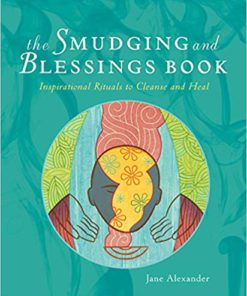 The Smudging and Blessings Book: Inspirational Rituals to Cleanse and Heal
The Smudging and Blessings Book: Inspirational Rituals to Cleanse and Heal  Novation Impulse 25 Keyboard Bundle with MIDI Cables and Austin Bazaar Polishing Cloth Bundle w/ MIDI Cables
Novation Impulse 25 Keyboard Bundle with MIDI Cables and Austin Bazaar Polishing Cloth Bundle w/ MIDI Cables  Stopmotion Explosion: Complete HD Stop Motion Animation Kit | Stop Motion Animation Software with Full HD 1080P Camera, Animation Software & Book (Windows & OS X)
Stopmotion Explosion: Complete HD Stop Motion Animation Kit | Stop Motion Animation Software with Full HD 1080P Camera, Animation Software & Book (Windows & OS X)  Onlyfire 03340 Electric Push Button Igniter BBQ Replacement for Select Gas Grill Models by Char-broil, Brinkmann, Grillmaster, Aussie,Charmglow, Kenmore, Lowes, Nexgrill, Brinkmann, Bakers, Grillware, Jenn Air, Huntington and Others, Black 4 male outlet
Onlyfire 03340 Electric Push Button Igniter BBQ Replacement for Select Gas Grill Models by Char-broil, Brinkmann, Grillmaster, Aussie,Charmglow, Kenmore, Lowes, Nexgrill, Brinkmann, Bakers, Grillware, Jenn Air, Huntington and Others, Black 4 male outlet 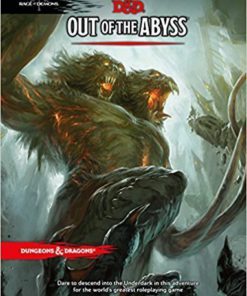 Out of the Abyss (Dungeons & Dragons)
Out of the Abyss (Dungeons & Dragons)  Anker Ergonomic Optical USB Wired Vertical Mouse 1000/1600 DPI, 5 Buttons CE100
Anker Ergonomic Optical USB Wired Vertical Mouse 1000/1600 DPI, 5 Buttons CE100 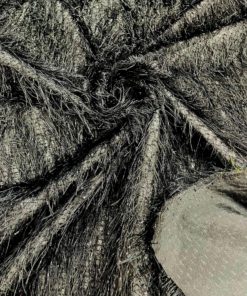 Backdrop King Inc, Shaggy Jacquard Faux Ostrich/Eye Lash Feathers Sewing Fringe with Metallic Thread Fabric (1 Yard, Black) 1 Yard
Backdrop King Inc, Shaggy Jacquard Faux Ostrich/Eye Lash Feathers Sewing Fringe with Metallic Thread Fabric (1 Yard, Black) 1 Yard  Eleven Madison Park: The Cookbook
Eleven Madison Park: The Cookbook  How to Create Stunning Digital Photography
How to Create Stunning Digital Photography  New Style RTIC 20 Oz Stainless Steel Tumbler 20oz
New Style RTIC 20 Oz Stainless Steel Tumbler 20oz  DJI ND16 Filter for Phantom 3 Professional & Advanced Quadcopter
DJI ND16 Filter for Phantom 3 Professional & Advanced Quadcopter  BBQ funland B5050 (Include Screws) Stainless Steel Heat Plate Brackets, Burner Hanger Brackets Replacement for Chargriller 5050 Duo, Chargriller 3001 (Set of 6)
BBQ funland B5050 (Include Screws) Stainless Steel Heat Plate Brackets, Burner Hanger Brackets Replacement for Chargriller 5050 Duo, Chargriller 3001 (Set of 6)  Coleman High Pressure 5 Foot Hose With Adapter
Coleman High Pressure 5 Foot Hose With Adapter  Ace Martial Arts Supply Single Sword Display Stand
Ace Martial Arts Supply Single Sword Display Stand  Splenda No Calorie Sweetener Value Pack 1200 Individual Packets 1200 Packets
Splenda No Calorie Sweetener Value Pack 1200 Individual Packets 1200 Packets 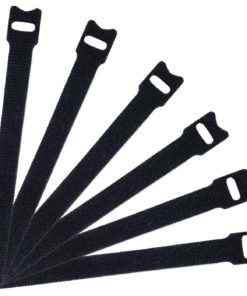 Attmu 50 PCS Reusable Fastening Cable Ties, Microfiber Cloth 6-Inch Hook and Loop Cord Ties, Black A-50 Black
Attmu 50 PCS Reusable Fastening Cable Ties, Microfiber Cloth 6-Inch Hook and Loop Cord Ties, Black A-50 Black  Hongso SPA231 (4-Pack) Stainless Steel BBQ Gas Grill Heat Plate, Heat Shield, Heat Tent, Burner Cover, Vaporizor Bar, and Flavorizer Bar for Costco Kirland, Jenn-air, Nexgrill, Lowes (17 3/4 4-Pack
Hongso SPA231 (4-Pack) Stainless Steel BBQ Gas Grill Heat Plate, Heat Shield, Heat Tent, Burner Cover, Vaporizor Bar, and Flavorizer Bar for Costco Kirland, Jenn-air, Nexgrill, Lowes (17 3/4 4-Pack  Funko Five Nights at Freddy's Articulated Bonnie Action Figure, 5"
Funko Five Nights at Freddy's Articulated Bonnie Action Figure, 5"  Make Lying Wrong Again Vote for Biden USA President Elections 2020 Democratic Party Political Compaign Coroplast Outdoor Weather-Resistant Non-Reflective with H-stakes Yard Sign 12'x18" Double Side Medium (12"x18")
Make Lying Wrong Again Vote for Biden USA President Elections 2020 Democratic Party Political Compaign Coroplast Outdoor Weather-Resistant Non-Reflective with H-stakes Yard Sign 12'x18" Double Side Medium (12"x18")  Z Hunter ZB-020 Series Fantasy Machete, Cord-Wrapped Handle, 23.75-Inch Overall Green
Z Hunter ZB-020 Series Fantasy Machete, Cord-Wrapped Handle, 23.75-Inch Overall Green  Texas Instruments BA II Plus Financial Calculator small
Texas Instruments BA II Plus Financial Calculator small  Bellemain Stainless Steel Measuring Cup Set, 6 Piece
Bellemain Stainless Steel Measuring Cup Set, 6 Piece  PEPPERLONELY 1oz Kosher Certified Botanical Dried Edible Arnica Flowers
PEPPERLONELY 1oz Kosher Certified Botanical Dried Edible Arnica Flowers  Grow More GL553998 Rapid Root #3, 2 Ounces, 2 oz
Grow More GL553998 Rapid Root #3, 2 Ounces, 2 oz 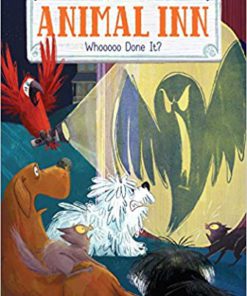 Whooooo Done It? (Animal Inn)
Whooooo Done It? (Animal Inn)  Star Shower Collection by BulbHead (Star Shower Tree Dazzler)
Star Shower Collection by BulbHead (Star Shower Tree Dazzler)  Vitamin B Complex Supplement Made in the USA | With Vitamin B12, B1, B2, B3, B5, B6, B7 Biotin & B9 Folic Acid | Vegan, non-GMO High Potency Capsules To Boost Energy, Metabolism, Skin, Hair & Eyes
Vitamin B Complex Supplement Made in the USA | With Vitamin B12, B1, B2, B3, B5, B6, B7 Biotin & B9 Folic Acid | Vegan, non-GMO High Potency Capsules To Boost Energy, Metabolism, Skin, Hair & Eyes  FatMat Self-Adhesive Rattletrap Sound Deadener Pack with Install Kit - 25 Sq Ft x 80 mil Thick
FatMat Self-Adhesive Rattletrap Sound Deadener Pack with Install Kit - 25 Sq Ft x 80 mil Thick  DBPOWER (2-in-1) 2Million Pixels 5Meter USB Waterproof HD 6LED Borescope Endoscope Inspection Tube Camera with USB Adpater for Android Device with OTG Function
DBPOWER (2-in-1) 2Million Pixels 5Meter USB Waterproof HD 6LED Borescope Endoscope Inspection Tube Camera with USB Adpater for Android Device with OTG Function 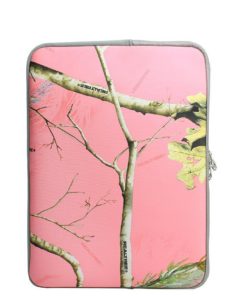 Absolute Eyewear Solutions 5996 Laptop Sleeve Real Tree Pink Camo, 15.6 in.
Absolute Eyewear Solutions 5996 Laptop Sleeve Real Tree Pink Camo, 15.6 in.  Hosa CMP-159 3.5 mm TRS to Dual 1/4" TS Stereo Breakout Cable, 9 Feet 1-Pack
Hosa CMP-159 3.5 mm TRS to Dual 1/4" TS Stereo Breakout Cable, 9 Feet 1-Pack  David Sunflower Seeds 36-Bags Nacho0.8Oz. By David Seeds
David Sunflower Seeds 36-Bags Nacho0.8Oz. By David Seeds  Etrading Medieval Back Hanger Baldric Sword Belt for Zelda Link Princes Anime Sword
Etrading Medieval Back Hanger Baldric Sword Belt for Zelda Link Princes Anime Sword  bayite 4 Pack 1" Low Profile Casters Wheels Soft Rubber Swivel Caster with 360 Degree Top Plate 100 lb Total Capacity for Set of 4 (2 with Brakes & 2 Without) Wheel dia. 1 inch- screws included
bayite 4 Pack 1" Low Profile Casters Wheels Soft Rubber Swivel Caster with 360 Degree Top Plate 100 lb Total Capacity for Set of 4 (2 with Brakes & 2 Without) Wheel dia. 1 inch- screws included  Kiva Certified Umf 20+ - Raw Manuka Honey (8.8 Oz)
Kiva Certified Umf 20+ - Raw Manuka Honey (8.8 Oz)  Ama_Trulystep MSC03 Copper Alcohol Moonshine Ethanol Still Spirits Boiler Distiller, 20 Litres
Ama_Trulystep MSC03 Copper Alcohol Moonshine Ethanol Still Spirits Boiler Distiller, 20 Litres  Good Smile The Legend of Zelda: Skyward Sword Link Figma Action Figure Standard Packaging
Good Smile The Legend of Zelda: Skyward Sword Link Figma Action Figure Standard Packaging  Bergen Marzipan 54 Piece Assorted Fruit Box Tray
Bergen Marzipan 54 Piece Assorted Fruit Box Tray  Nilight 25" 162W Led Light Bar Flood Spot Combo Waterproof Driving Lights Off Road Lights for SUV UTE Truck ATV UTV ,2 Years Warranty
Nilight 25" 162W Led Light Bar Flood Spot Combo Waterproof Driving Lights Off Road Lights for SUV UTE Truck ATV UTV ,2 Years Warranty  Instant Read Digital Meat Thermometer - Ultra Fast Electronic BBQ and Kitchen Food Thermometer with long probe for Cooking, Grill, Smoker, Candy - Battery Included Blue
Instant Read Digital Meat Thermometer - Ultra Fast Electronic BBQ and Kitchen Food Thermometer with long probe for Cooking, Grill, Smoker, Candy - Battery Included Blue  Kiva Certified Umf 15+ - Raw Manuka Honey (8.8 Oz)
Kiva Certified Umf 15+ - Raw Manuka Honey (8.8 Oz) 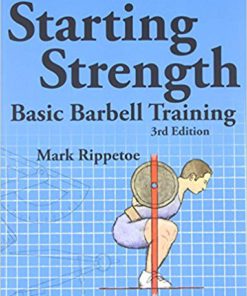 Starting Strength: Basic Barbell Training, 3rd edition
Starting Strength: Basic Barbell Training, 3rd edition  HANGRY KIT - Essential Kit - Care Package Snack Gift Assortment
HANGRY KIT - Essential Kit - Care Package Snack Gift Assortment  If at First You Don't Succeed, Try Doing It The Way I Told You to - 2x3.5 Patch
If at First You Don't Succeed, Try Doing It The Way I Told You to - 2x3.5 Patch  Whynter 11,000 BTU Dual Hose Portable Air Conditioner (ARC-110WD)
Whynter 11,000 BTU Dual Hose Portable Air Conditioner (ARC-110WD)  WWE Bubba Ray Dudley and Devon Dudley Figure (2 Pack)
WWE Bubba Ray Dudley and Devon Dudley Figure (2 Pack) 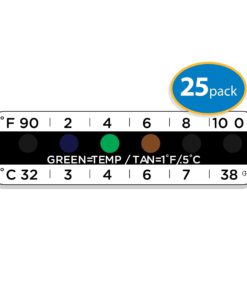 Temperature Strips for Urine Drug Testing (25 Pack)
Temperature Strips for Urine Drug Testing (25 Pack) 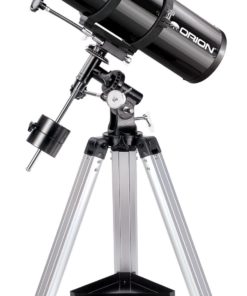 Orion 09007 SpaceProbe 130ST Equatorial Reflector Telescope (Black) Standard Packaging
Orion 09007 SpaceProbe 130ST Equatorial Reflector Telescope (Black) Standard Packaging 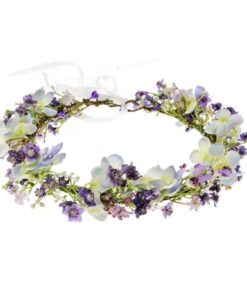 Vividsun Green Leaf Flower Crown Eucalyptus Crown Wedding Bridal Maternity Photo Props Headpiece A/Purple
Vividsun Green Leaf Flower Crown Eucalyptus Crown Wedding Bridal Maternity Photo Props Headpiece A/Purple 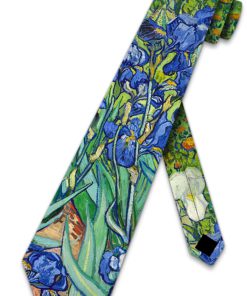 Three Rooker Art Ties Mens Van Gogh Irises Painting Necktie
Three Rooker Art Ties Mens Van Gogh Irises Painting Necktie  DC Collectibles Batman Arkham Knight: Nightwing Action Figure
DC Collectibles Batman Arkham Knight: Nightwing Action Figure  Tube Heroes TDM Action Figure with Accessories
Tube Heroes TDM Action Figure with Accessories  Violin, Cello, Viola and String Bass Fingerboard Stickers (50 Pack) Amazing tool for teachers and students!
Violin, Cello, Viola and String Bass Fingerboard Stickers (50 Pack) Amazing tool for teachers and students!  Sago Brothers Modeling Clay Air Dry Ultra Light Molding Magic Clay 24 Colors, Best Kids Gifts Ever 24 Pack
Sago Brothers Modeling Clay Air Dry Ultra Light Molding Magic Clay 24 Colors, Best Kids Gifts Ever 24 Pack  Sour Patch Kids Bag Drs 3.5-Pounds
Sour Patch Kids Bag Drs 3.5-Pounds  Serta Big & Tall Executive Office Chair Roasted Chestnut
Serta Big & Tall Executive Office Chair Roasted Chestnut  SpaGuard Spa Chlorinating Concentrate - 5 Lb 5lb
SpaGuard Spa Chlorinating Concentrate - 5 Lb 5lb  Absolute Eyewear Solutions 5995 Laptop Sleeve Real Tree All Purpose, 15.6 in.
Absolute Eyewear Solutions 5995 Laptop Sleeve Real Tree All Purpose, 15.6 in.  BMW 51148132375 Emblem
BMW 51148132375 Emblem  The Ginger People Gin Gins Chewy Ginger Candy 4-Flavor Variety: One 2 Lb Asso..
The Ginger People Gin Gins Chewy Ginger Candy 4-Flavor Variety: One 2 Lb Asso..  3 Pack VITA-MYR Zinc Plus XTRA Natural & Effective Herbal Toothpaste 5.4 oz
3 Pack VITA-MYR Zinc Plus XTRA Natural & Effective Herbal Toothpaste 5.4 oz  Pez Candy Single Flavor 2 Lb Bulk Bag (Grape) Grape
Pez Candy Single Flavor 2 Lb Bulk Bag (Grape) Grape  MaxxHaul 70089 Steel Trailer Step
MaxxHaul 70089 Steel Trailer Step  David Sunflower Seeds Nacho Cheese 72 Ct. .8Oz Bags (2 Boxes Of 36)
David Sunflower Seeds Nacho Cheese 72 Ct. .8Oz Bags (2 Boxes Of 36)  Dell AC511 USB Wired SoundBar
Dell AC511 USB Wired SoundBar  J-Tech Digital Scroll Endurance Wired Mouse Ergonomic Vertical USB Mouse with Adjustable Sensitivity (600/1000/1600 DPI), Removable Palm Rest & Thumb Buttons - Reduces Hand/Wrist Pain (Wired)
J-Tech Digital Scroll Endurance Wired Mouse Ergonomic Vertical USB Mouse with Adjustable Sensitivity (600/1000/1600 DPI), Removable Palm Rest & Thumb Buttons - Reduces Hand/Wrist Pain (Wired) 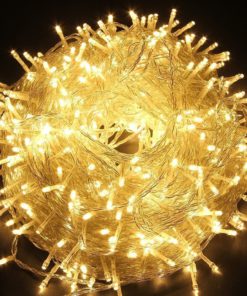 Outdoor LED String Lights 328FT 500LEDs - Lampwin 2017 New Design Warm White Fairy LED Starry String Lights for Christmas, Party, Home, Patio, Garden, Holiday, and Wedding Decoration
Outdoor LED String Lights 328FT 500LEDs - Lampwin 2017 New Design Warm White Fairy LED Starry String Lights for Christmas, Party, Home, Patio, Garden, Holiday, and Wedding Decoration 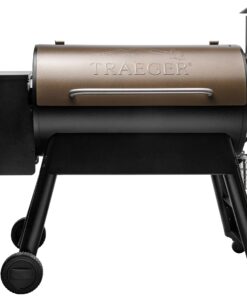 Traeger Grills Pro Series 34 Electric Wood Pellet Grill and Smoker, Bronze, Large
Traeger Grills Pro Series 34 Electric Wood Pellet Grill and Smoker, Bronze, Large 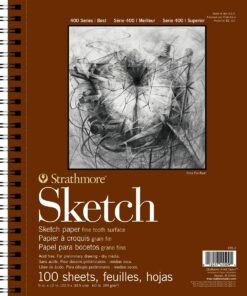 Strathmore 455-3, 400 Series Sketch Pad, 9"x12" Wire Bound, 100 Sheets, White 9x12
Strathmore 455-3, 400 Series Sketch Pad, 9"x12" Wire Bound, 100 Sheets, White 9x12  Natural Sweet Apricot Seeds Raw 100% Organic (Kernels) 930g Bag 2lb
Natural Sweet Apricot Seeds Raw 100% Organic (Kernels) 930g Bag 2lb  Plant Theatre Psychedelic Salad Kit - 5 Fantastic Salad Vegetables to Grow
Plant Theatre Psychedelic Salad Kit - 5 Fantastic Salad Vegetables to Grow  Whynter BWR-18SD 18 Bottle Built-In Wine Refrigerator
Whynter BWR-18SD 18 Bottle Built-In Wine Refrigerator ![Kubo and the Two Strings [Blu-ray] Blu-ray
November 22, 2016](https://swiftsly.com/wp-content/uploads/2023/12/A1PCgzgWapL-247x296.jpg) Kubo and the Two Strings [Blu-ray] Blu-ray
November 22, 2016
Kubo and the Two Strings [Blu-ray] Blu-ray
November 22, 2016  28-month-aged Parmigiano Reggiano (2 lbs.)
28-month-aged Parmigiano Reggiano (2 lbs.)  Intex Hose Conversion Adapters Kit
Intex Hose Conversion Adapters Kit 